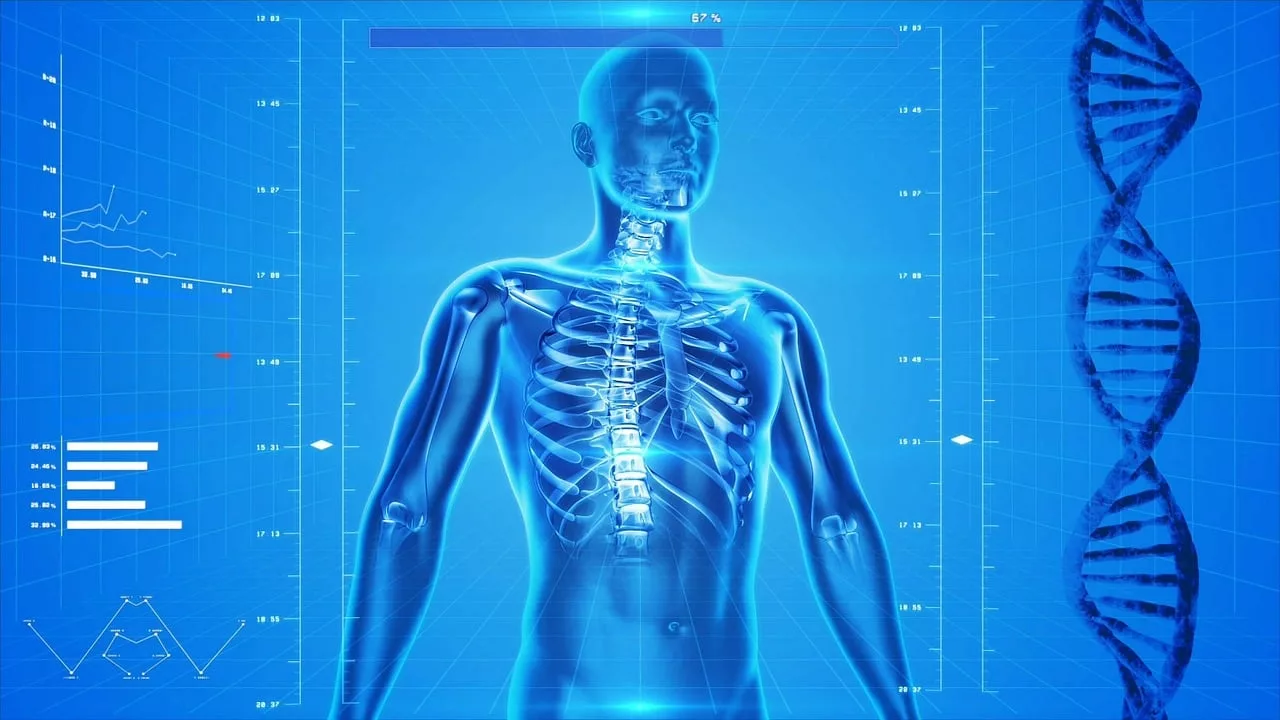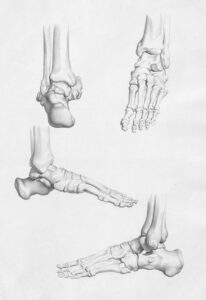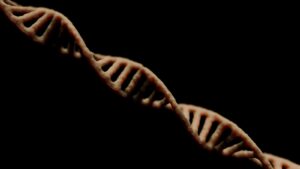The term “chimera” evokes images of mythical creatures with a lion’s head, goat’s body, and serpent’s tail. In ancient mythology, the Chimera was a fire-breathing monster that symbolized a terrifying fusion of different creatures. But in the world of science and medicine, a human chimera is something entirely different yet equally fascinating—a person whose body contains two distinct sets of DNA. While not as visually dramatic as the mythical creature, human chimeras represent a rare and complex phenomenon that challenges our understanding of genetics, individuality, and identity.
The concept of a human having two different sets of DNA in one body may seem strange, even impossible, given our traditional understanding of biology. Yet, chimerism is a real and well-documented occurrence. It can arise in various ways, often without any outwardly noticeable effects, but sometimes with profound implications for health, reproduction, and even legal identity. From individuals unknowingly harboring their twin’s DNA to mothers carrying traces of their children’s genetic material, chimerism takes many forms, each with its own unique origin and story.
This article dives deeply into the science of human chimeras. We’ll explore how chimerism occurs, the different types and mechanisms behind it, its physical manifestations, and its medical and legal implications. Along the way, we’ll uncover the mysteries of this extraordinary condition and the profound questions it raises about what it means to be human.
What Is a Human Chimera?
A human chimera is an individual who has two or more genetically distinct cell populations in their body. In most people, every cell contains the same DNA, inherited from a single fertilized egg that divides and differentiates into the tissues and organs of the body. However, in a chimera, this uniformity breaks down. Different cells in the body may carry completely different sets of DNA.
Chimerism is a type of genetic mosaicism, but it is distinct in its origin. While mosaicism typically arises from mutations that occur after fertilization, chimerism involves the merging or transfer of genetically distinct cells into one body. This can happen naturally during pregnancy or as a result of medical interventions, such as organ or bone marrow transplants.
Although rare, chimerism is not unheard of in humans. In some cases, individuals may go their entire lives without realizing they are chimeras. In other cases, the condition is discovered through unexpected circumstances, such as genetic testing for medical reasons, organ donation, or parentage disputes. Regardless of how it is detected, the presence of two DNA sets in one body challenges conventional notions of identity and individuality.
How Does Chimerism Occur?
Chimerism arises when cells from two different sources coexist in the same body. This can happen in several ways, each involving unique biological processes that highlight the complexity of human development. Let’s examine the primary mechanisms that lead to the creation of human chimeras.
1. Tetragametic Chimerism
Tetragametic chimerism occurs when two fertilized eggs, or zygotes, fuse during the early stages of development to form a single embryo. Each zygote carries its own unique DNA, and when they merge, the resulting individual has cells derived from both genetic lineages. Essentially, two fraternal twins combine into one person.
This type of chimerism often goes unnoticed because it may not result in any outward physical signs. However, in some cases, tetragametic chimerism can lead to visible traits such as heterochromia (two differently colored eyes), patchy skin pigmentation, or even intersex characteristics if the two zygotes were of different sexes.
2. Microchimerism
Microchimerism occurs when a small number of cells from one individual enter and integrate into the tissues of another individual. This process is most common during pregnancy, where fetal cells can cross the placenta and enter the mother’s bloodstream, or maternal cells can transfer into the fetus.
Microchimerism is surprisingly common. Studies have shown that fetal cells can persist in a mother’s body for decades, integrating into various tissues, including the heart, liver, and brain. Similarly, maternal cells can remain in a child’s body long after birth, creating a subtle form of chimerism that may have immune system implications.
3. Chimerism from Medical Procedures
Modern medical practices, particularly organ transplants and bone marrow transplants, can also lead to chimerism. In these cases, the recipient’s body incorporates donor cells, which carry a different genetic profile.
Bone marrow transplants, often used to treat leukemia or other blood disorders, are a prime example. Donor bone marrow produces blood cells that circulate throughout the recipient’s body, creating a mixed genetic composition. Similarly, organ transplants introduce foreign DNA into the recipient’s tissues, sometimes resulting in measurable chimerism.
Physical Signs of Chimerism
The physical manifestations of chimerism vary widely and often depend on the extent and type of genetic mixing. While some chimeras exhibit no outward signs, others display noticeable traits that hint at their dual genetic identity. Here are some of the most common physical features associated with chimerism:
1. Skin Pigmentation
Chimeras may exhibit mosaic-like skin pigmentation, where patches of the skin have different colors or tones due to the presence of genetically distinct cells. This patchy appearance can result from variations in melanin production across different cell populations.
2. Heterochromia
Heterochromia, or having two differently colored eyes, is another hallmark of chimerism. This occurs when the cells in each iris carry distinct genetic profiles, leading to differences in pigmentation. While heterochromia can have other causes, it is sometimes linked to tetragametic chimerism.
3. Ambiguous Genitalia
In rare cases of tetragametic chimerism, particularly when the fused zygotes are of different sexes, the individual may develop intersex characteristics. This can result in a mix of male and female reproductive tissues, leading to ambiguous genitalia.
4. Blood Type Anomalies
Chimeras may have unusual blood type patterns, such as two different blood types coexisting in their circulatory system. This is most commonly observed in cases of bone marrow transplantation but can also occur naturally.
The Role of Genetic Testing in Detecting Chimerism
Many cases of chimerism go unnoticed until genetic testing reveals the presence of multiple DNA profiles. With advances in genomic technologies, it has become easier to identify chimerism through techniques like DNA fingerprinting, karyotyping, and whole-genome sequencing.
One famous case of chimerism involved a woman named Lydia Fairchild, who discovered her condition during a legal dispute over custody. DNA tests showed that her children’s genetic profiles did not match her own, leading authorities to suspect fraud. Further investigation revealed that Fairchild was a tetragametic chimera, with her reproductive organs carrying DNA from one genetic lineage and the rest of her body carrying another.
Cases like this highlight the complexities of chimerism and its potential implications for legal systems, particularly in disputes over parentage, identity, or inheritance.
Medical Implications of Chimerism
The coexistence of two genetic profiles in one body has significant medical implications, particularly in the fields of transplantation, immunology, and autoimmune diseases. Understanding these effects can improve medical treatments and deepen our understanding of the human body.
1. Organ Transplantation
Chimerism is often a desired outcome in organ transplantation. When a recipient’s immune system integrates donor cells, it can reduce the likelihood of organ rejection. However, this process must be carefully managed to avoid complications such as graft-versus-host disease, where donor immune cells attack the recipient’s tissues.
2. Autoimmune Disorders
Microchimerism has been implicated in certain autoimmune disorders, such as lupus and rheumatoid arthritis. Researchers believe that the presence of foreign cells may trigger immune responses, leading to chronic inflammation and tissue damage. Understanding these mechanisms could pave the way for new therapies.
3. Cancer Research
Chimerism also offers insights into cancer biology. For example, studying how donor cells interact with cancerous tissues in transplant recipients can provide valuable information about tumor growth, immune responses, and potential treatments.
Ethical and Legal Considerations
The existence of human chimeras raises complex ethical and legal questions about identity, individuality, and reproductive rights. Some of the key issues include:
1. Legal Identity
In cases where DNA testing is used to establish identity or parentage, chimerism can lead to unexpected and contentious results. For example, a chimera’s reproductive tissues may carry a different genetic profile from the rest of their body, complicating parentage determinations.
2. Reproductive Rights
Tetragametic chimerism can result in situations where a person’s offspring carry DNA that does not match the majority of their body’s cells. This challenges conventional definitions of biological parenthood and raises questions about reproductive rights and genetic identity.
3. Ethical Boundaries in Medicine
Research involving chimerism, particularly in the creation of animal-human chimeras for organ transplantation, raises ethical concerns. While such research has the potential to save lives, it also sparks debates about the moral implications of mixing human and animal DNA.
The Broader Implications of Chimerism
Chimerism is not limited to humans; it is a common phenomenon in the animal kingdom. For example, some cats, known as calico chimeras, exhibit striking fur patterns caused by the coexistence of two genetic profiles. Similarly, certain agricultural animals have been studied for their chimeric traits, offering insights into genetics and breeding practices.
Understanding chimerism has far-reaching implications beyond biology. It challenges traditional notions of genetic identity, forcing us to reconsider what it means to be human. It also underscores the incredible complexity and adaptability of life, revealing the ways in which nature blends diversity and individuality in unexpected ways.
Human chimerism is a rare and fascinating phenomenon that defies conventional understanding of genetics and individuality. Whether arising from the fusion of zygotes, the exchange of cells during pregnancy, or medical interventions, chimerism reveals the intricate processes that shape human development.
Beyond its scientific intrigue, chimerism has profound implications for medicine, law, and ethics. It forces us to grapple with complex questions about identity, parenthood, and the boundaries of genetic research. As science continues to advance, the study of chimerism will deepen our understanding of the human body and its capacity for diversity, resilience, and adaptation. Far from being an anomaly, chimerism serves as a testament to the boundless possibilities of biology and the enduring mystery of life itself.




